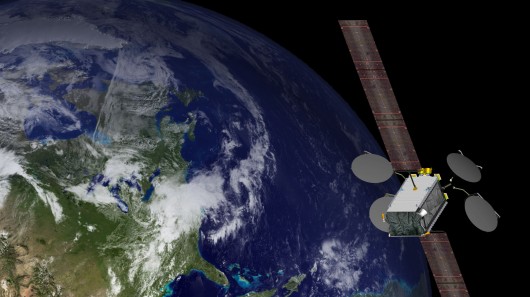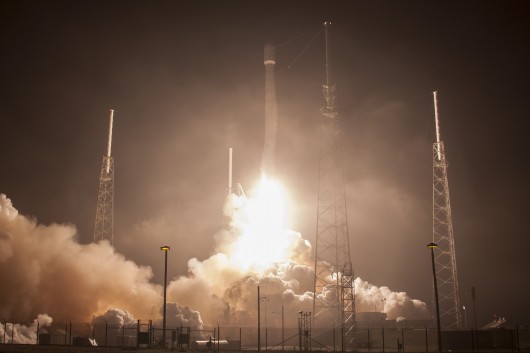Surprise with the world's first satellite using energy-saving electricity
According to scientific news in Gizmag newspaper, Space Exploration Technology Corporation SpaceX successfully launched the first two artificial satellites in the world using electric motors.
Science news in Gizmag said that the world-famous aircraft manufacturer Boeing said the two 702SP-based satellites are located under ion engines, called ABS-3A and Eutelsat 115 West B satellites. Released last Sunday night, there was a response to the signal to control the task towards a geostationary orbit.
 Latest scientific news refers to two artificial satellites using the world's first electric motor
Latest scientific news refers to two artificial satellites using the world's first electric motor
According to Boeing, the two satellites have been completed in less than three years and designed with light weight and not too expensive. ABS-3A satellite is located on the Bermuda Sea, this satellite is closed at the 3 ° West meridian and will provide information of the Atlantic, Pacific and Indian Ocean regions. And Eutelsat 115 West B satellite under Eutelsat headquarters in Paris will be located at 114.9 ° West meridian, providing data services for Latin America, Canada and Alaska.
The key technology of the two new geostationary satellites is the Xenon Ion (XIPS) gas propulsion system. Hybrid systems were introduced into the previous orbit, using a mixture of chemicals and ionic propellants, and this is the first time that satellites operate with a fully electric device.
 Science news is known to save the cost of launching the most rocket-made artificial satellites ever
Science news is known to save the cost of launching the most rocket-made artificial satellites ever
Boeing said the technology was based on an experience of 210,000 hours of ion propulsion and 10 times more efficient than liquid fuel rockets. Four 25 cm thrusters use xenon gas as fuel, allowing satellites to maintain storage stations using only 5 kg of fuel per year. When satellites need less fuel and smaller propulsion, it will save the cost of launching more satellites.
The satellites were launched on March 1 at 22:50 from the Launch Complex 40 launch area of the Space Mining Technology Group at Cape Canaveral Air Station (CCAFS), Florida. SpaceX Group said it was the most massive payload satellite they have ever launched. Two artificial satellites were launched as a cohesive stack on SpaceX Falcon 9 missiles, using Boeing technology to save costs.
 Science and technology news highlights the advancement of modern technology
Science and technology news highlights the advancement of modern technology
Unlike the recent launches of Falcon 9 missiles, this time it is not necessary to use a booster to control energy when the rocket lands. Shortly before the launch of the rocket on Sunday night, SpaceX's chief executive and founder Elon Musk said there would be no energy support to land the Falcon 9 missile because of launch. According to super-synchronous orbit, there will not be enough surplus fuel to push the engine. The missile launch on Sunday night and a later flight will not have enough fuel to propel the rocket.
- Energy saving solutions for universities
- How to save electricity in winter
- Lamp life long life saving electricity
- Understand the energy saving ratings on appliances
- Smart power saving device
- Electricity saving, Japan for long lunch break ...
- Save winter electricity easily with simple widgets
- Responding to climate change from ... light bulbs
- VN-Venezuela produces electricity-saving light bulbs
- Build the first energy-efficient home in 2013
- Save energy from the window
- Radiant energy-saving light bulbs can be harmful
 Van Allen's belt and evidence that the Apollo 11 mission to the Moon was myth
Van Allen's belt and evidence that the Apollo 11 mission to the Moon was myth The levels of civilization in the universe (Kardashev scale)
The levels of civilization in the universe (Kardashev scale) Today Mars, the sun and the Earth are aligned
Today Mars, the sun and the Earth are aligned The Amazon owner announced a secret plan to build a space base for thousands of people
The Amazon owner announced a secret plan to build a space base for thousands of people